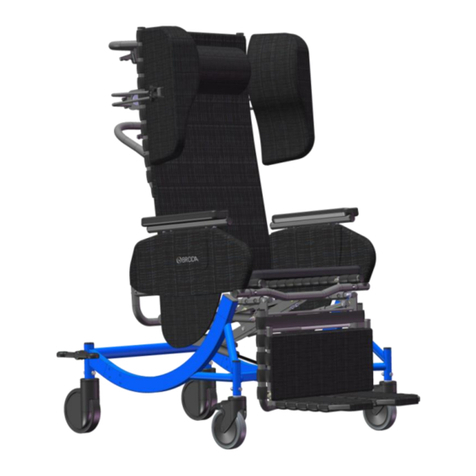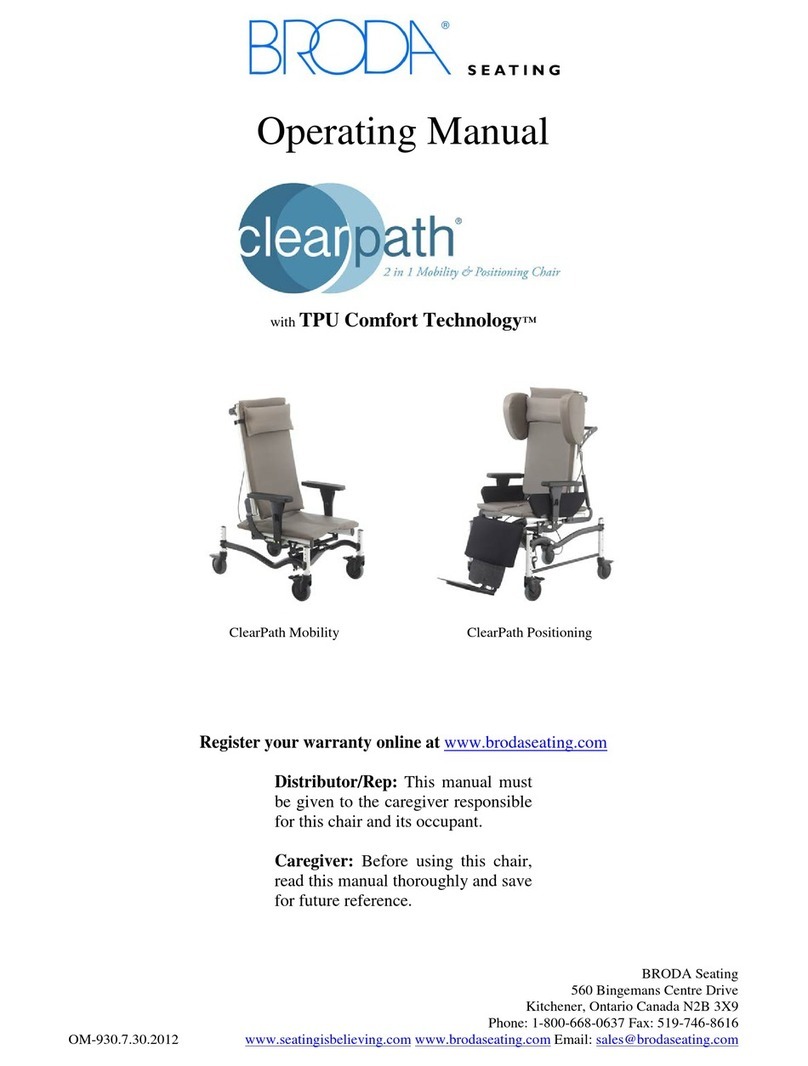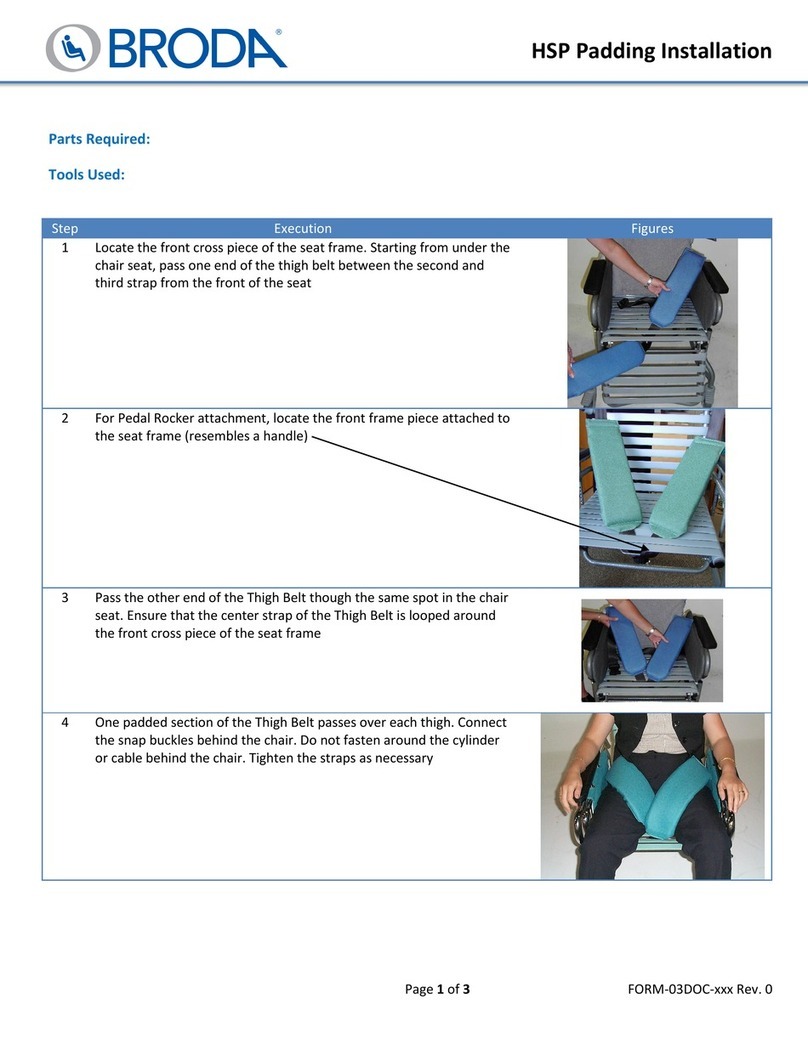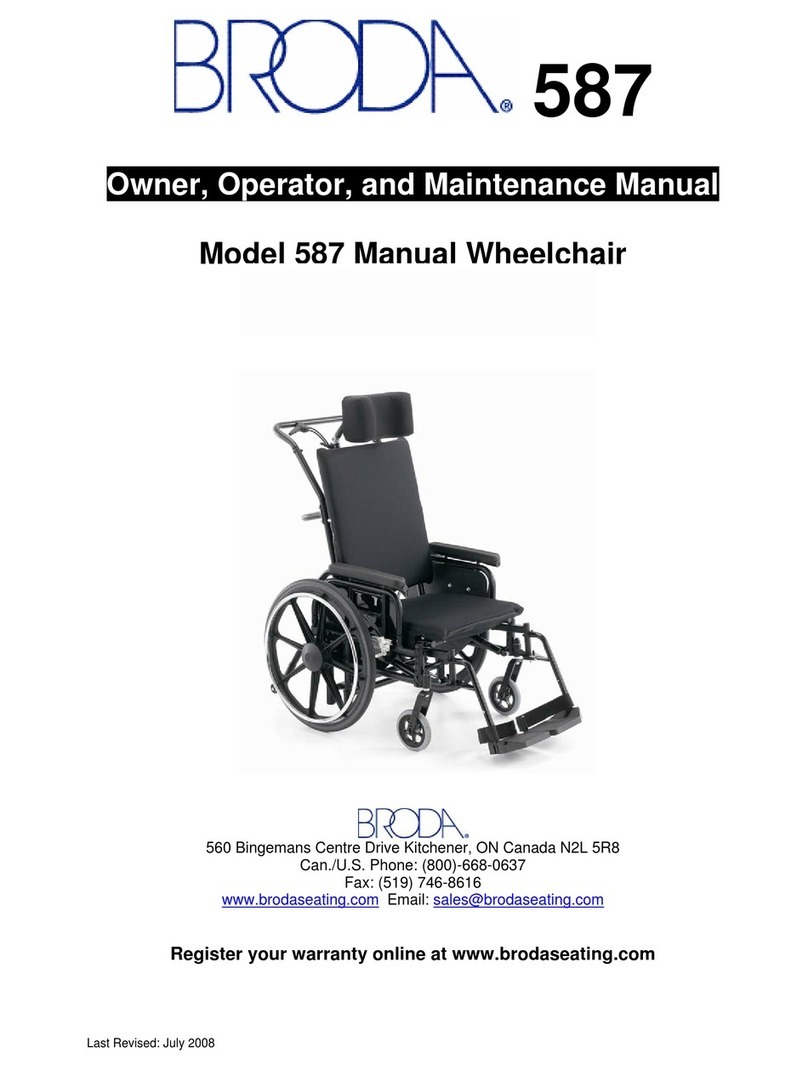It is important to note that if the wheel locks are applied while the patient is in the chair, that the
caregiver does not leave the patient unattended, especially those patients who have the
capability or tendency to propel the chair on their own, and/or those who may be agitated. This
could cause harm to the patient if they attempt to propel the chair while the wheel locks are
applied.
Failure to follow these instructions will unnecessarily increase the risk of serious falls by patients,
caregivers, or third parties caused by the wheelchair unintentionally moving.
1.8 Re-Positioning of Patient “Danger of Pinching” WARNING
Broda wheelchairs offer the benefits of seat tilt, a footrest, and adjustable, removable arms.
During the movement of any of these functions, the following safety measures must be observed:
•The patient’s arms must be securely positioned inside the wheelchair frame with their hands
on their body.
•The patient’s feet must be correctly positioned on the footrests.
•All of the wheelchair’s wheel locks must be applied.
•Only one caregiver at a time attempts to operate the wheelchair’s functions.
•Only one wheelchair function is operated at a time.
•The patient’s and caregiver’s body are clear of all pinch points before operating any of the
chair functions
Failure to follow these safety measures can put the patient's or caregiver’s limbs at risk of injury.
Patients who may be unaware of their body position or unable to maintain a safe body position
have the highest risk of injury from pinching and caregivers should be more cautious with these
patients. A second caregiver may be required to ensure the safety of these patients during these
operations.
1.9 Accidental Motion “Danger of Falling or Collision” WARNING
We recommend Broda wheelchairs for indoor use within a long-term care institution and where
there is insufficient slope to cause the wheelchairs to move unaided. Wheelchairs used where the
surface is uneven or sloped are at risk of unintended movement and could become a serious
danger to the patient, caregiver(s), or a third party. We recommend that Broda wheelchairs are
located away from stairwells, elevators, and exterior doorways. Placing the patient near
handrails, tables or stationary objects while the wheel locks are in place should be done with
caution and should be supervised. Failure to do so may lead to unnecessary injury due to the
patient grabbing hold of the object and either pulling the object on top of them or causing the
chair to tip over.
1.10 Improper Restraint Use “Risk of Serious Injury” WARNING
We recommend that alternatives to physical restraints be used with patients while seated in the
wheelchair except under the specific instructions of the patient’s primary caregiver and with
permission of the patient’s family or guardian. Physical restraints have been identified as a
common cause of serious injury to patients while they are seated. We recommend that the
primary caregiver responsible for seating first considers the re-positioning options available in the
wheelchair to reduce the risks of sliding, falling, or self injury.
If a physical restraint is determined to be appropriate to prevent sliding or falling out of the
wheelchair, Broda supplies both seat belts and thigh belts. In all cases, it is the patient’s primary
caregiver who must take responsibility for the safety of the patient if restraints are used.







































